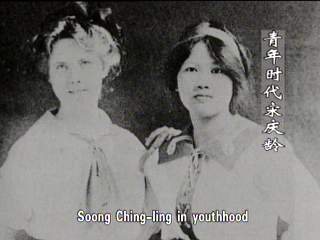 |
|
Dream of the Republic (1)
Birth of the Republic |
| CCTV.COM 2002-08-24 08:08:01 |
|
On October 12, 1911, Sun Yat-sen got the information about Wuchang Uprising from newspapers when he stayed in the United States. He was so excited that he went to Europe to seek support from other countries. It was a revolution of far-reaching significance that would change the fate of China, and had left an unforgettable impression to the Chinese people.
"I was born in December of 1911. Revolution of 1911 was completed in October so there was no emperor at that time. Sun Yat-sen became President of the Republic on January l, 1912. But I was born in December of 1911 when there was no emperor, nor president. I thought I was a freeman," Hou Renzhi, Professor of Peking University, recalls.
"I was 13 years old then. I didn't understand much about it. I only remember there were many banners and flags," said Kong Baowen, who is now 100 years old.
Provinces proclaimed their independence one after another. Different flags and banners were hoisted. People were happily waiting for realizing their common dream— a republic.
 At 9:00 am on December 29, 1911, 45 representatives from 17 provinces gathered at the Administrative Bureau of Jiangsu Province in Nanjing to vote for a provisional president. Each province had a vote. Sun Yat-sen won 16 votes and was elected. Cheers of "Long Live the Republic of China"were resounded in the air. Nanjing was in a scene of jubilation. At 9:00 am on December 29, 1911, 45 representatives from 17 provinces gathered at the Administrative Bureau of Jiangsu Province in Nanjing to vote for a provisional president. Each province had a vote. Sun Yat-sen won 16 votes and was elected. Cheers of "Long Live the Republic of China"were resounded in the air. Nanjing was in a scene of jubilation.
Sun Yat-sen came to Nanjing from Shanghai and was sworn in as Provisional President on New Year's Day of 1912. In the evening, foreign diplomats came to the brightly-decorated Presidential Palace for congratulations. Hundreds of thousands of people gathered outside the palace to cheer the event.
Sun Yat-sen's handwriting is still hanging on the wall. In this shabby room, Sun Yat-sen had signed many decrees and laws that opened a new page in Chinese history. It was an eloquent proof that a republican government was different from a feudal dynasty.
Sun Yat-sen was modest and easy of access, and thrifty and simple in daily life. Tang Shaoyi was an envoy sent by the Qing court to negotiate peace with the republic. He was also a fellow villager of Sun Yat-sen. One day he went to visit Sun in the Presidential Palace. He had been living in luxury and couldn't take potluck when he dined with Sun Yat-sen, while the latter ate with a good appetite. Tang was deeply touched. Later he turned to the revolutionary side and became the first Premier of the National Republic.
Sun Yat-sen presided over the first state conference. The new republic adopted a presidential system, following the pattern of the United States. All the ministers were under direct leadership of the president.
Sun Yat-sen invited elite of different political parties to his cabinet. Zhang Jian, leader of constitutionalism, was appointed Minister of Industry and Commerce who had been an opponent a month ago.
 At that time, Soong Ching-ling was a young student studying in the United States. She was very excited when she received from home a five-colored flag of the republic, and wrote articles published in the school journal. She honored the establishment of the republic as one of the greatest events of the 20th century. Three years later, she became a faithful follower of Sun Yat-sen's career. At that time, Soong Ching-ling was a young student studying in the United States. She was very excited when she received from home a five-colored flag of the republic, and wrote articles published in the school journal. She honored the establishment of the republic as one of the greatest events of the 20th century. Three years later, she became a faithful follower of Sun Yat-sen's career.
Mao Zedong was then a student in Changsha of Hunan Province. He was so excited by the event that he came to join the local revolutionary army. Being devoted to the Russian revolution, Lenin noticed what had happened in China. He praised Sun Yat-sen's political program by saying that it was full of real and militant democracy.
|
|
|
|
|
|
|
 |









